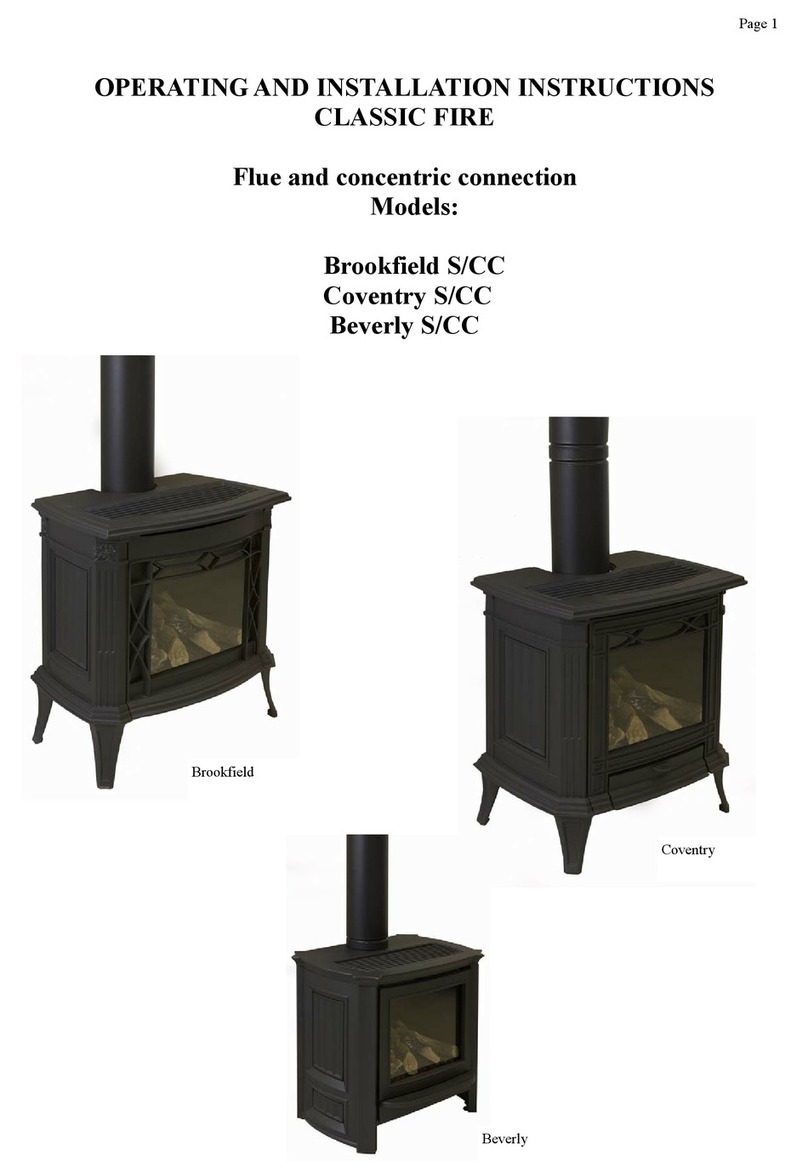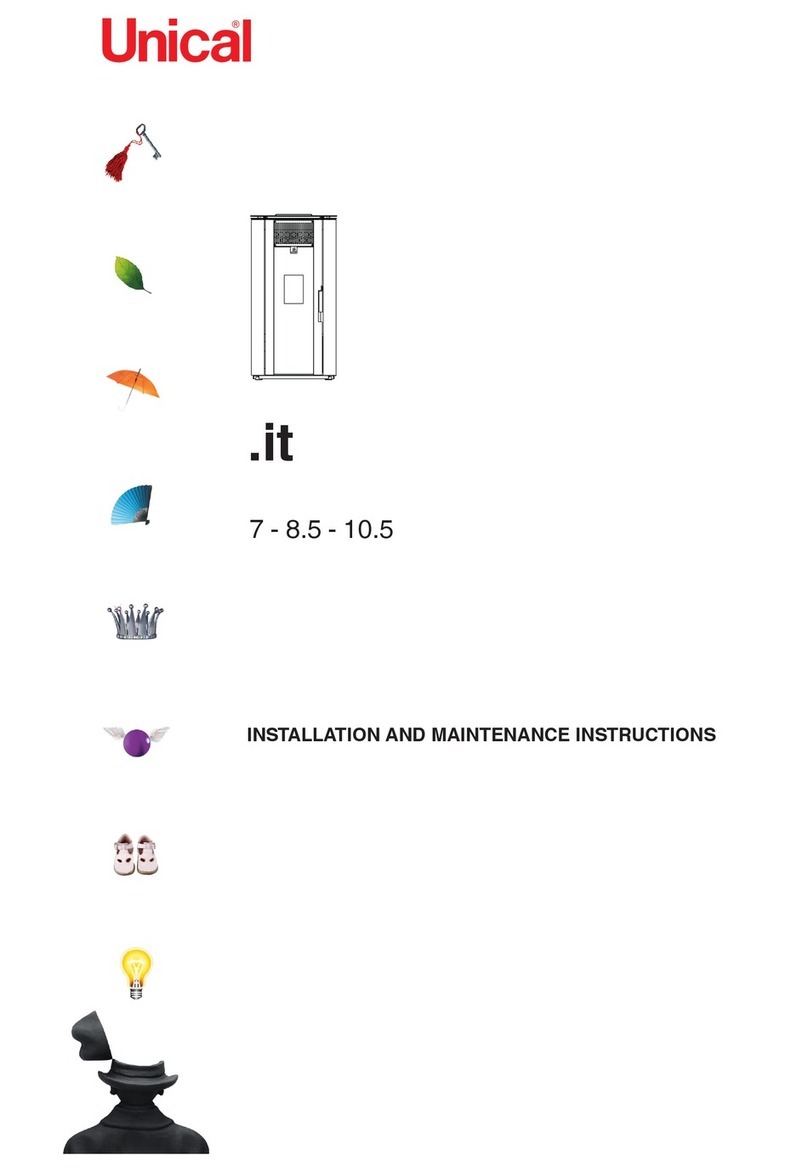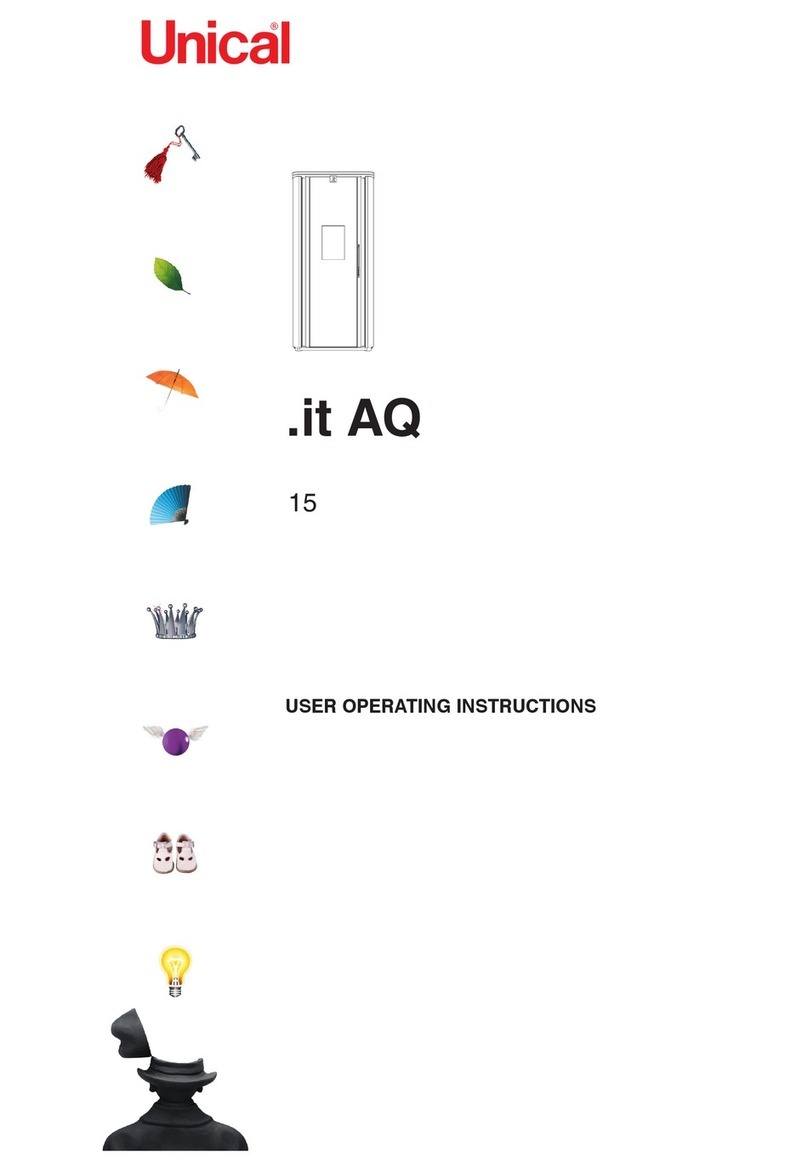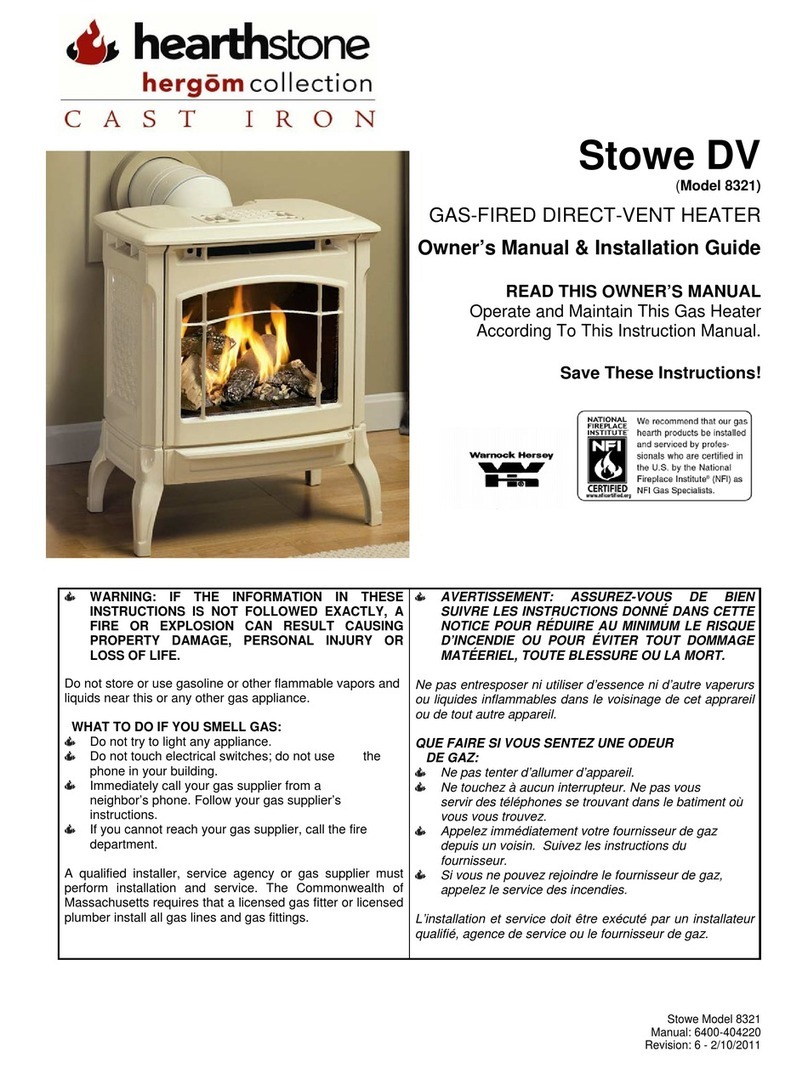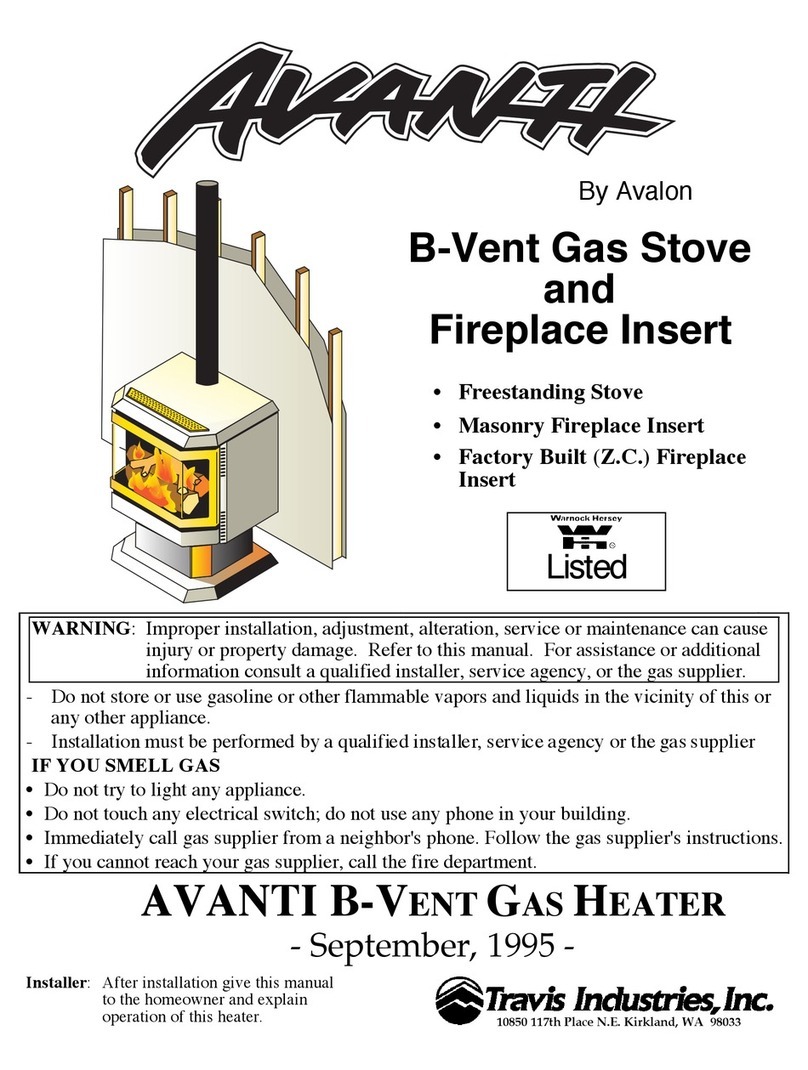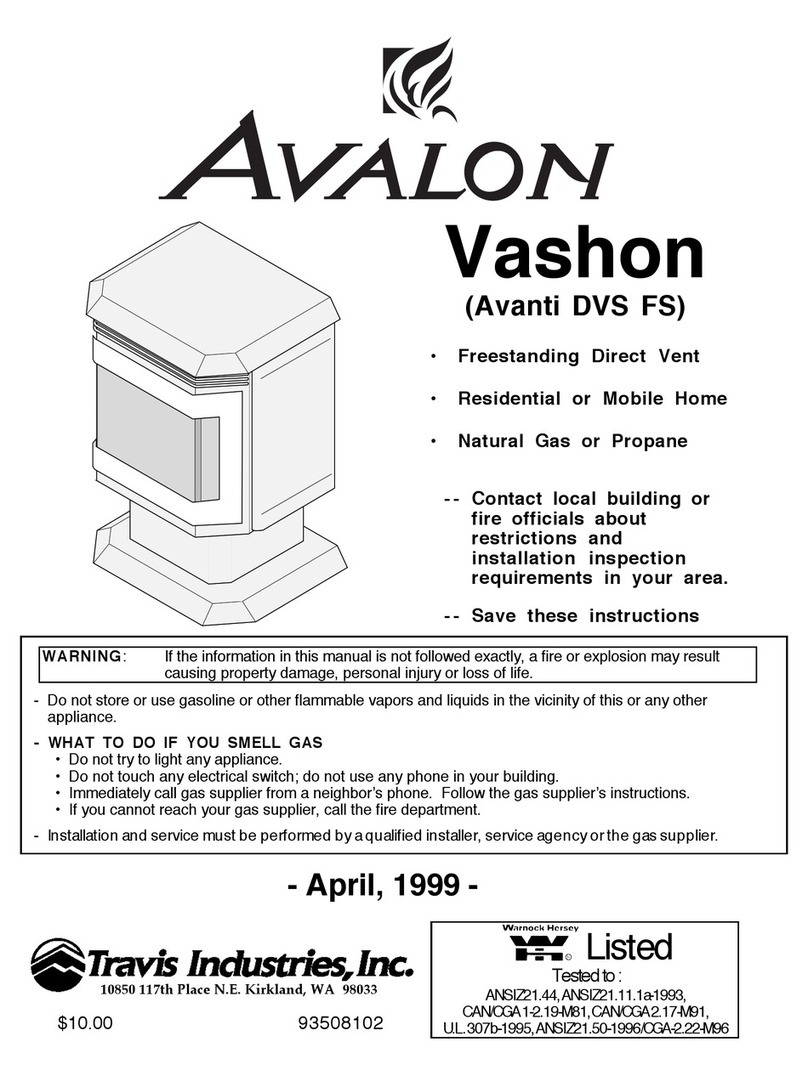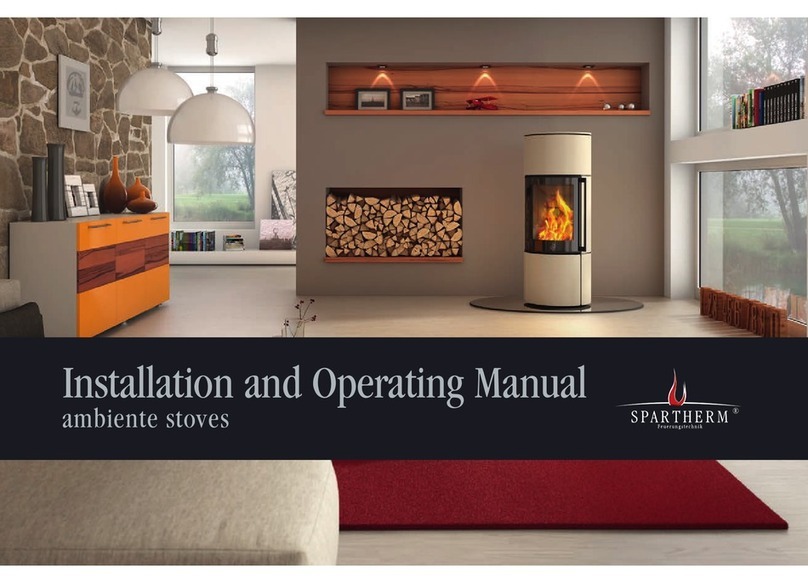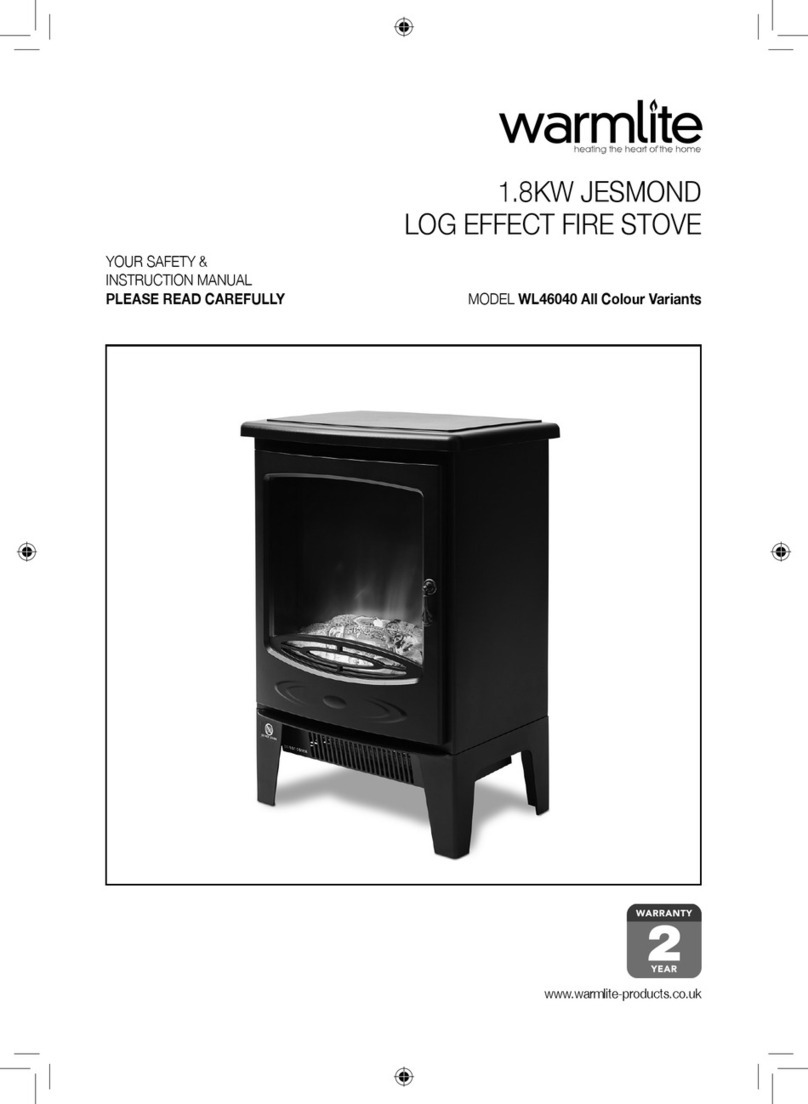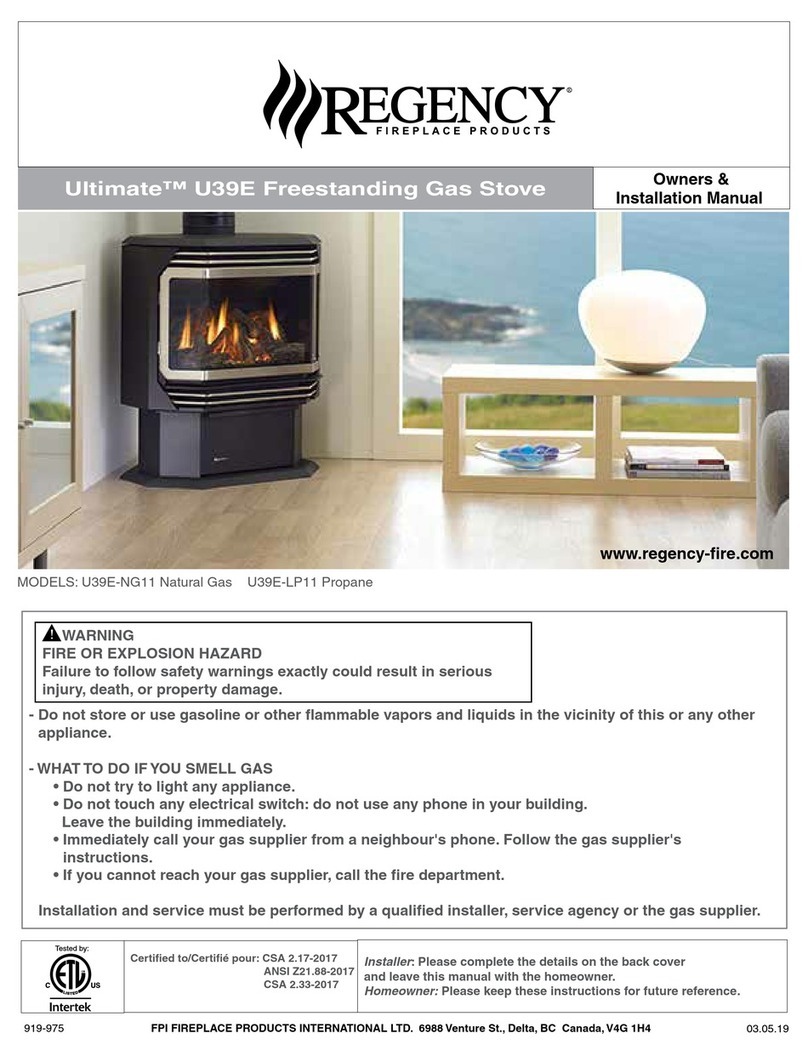
3
Our company declares that the stove complies with
the following standards for the European Directive CE
marking.
• 2004 /108 EC (EMC directive) as amended;
• 2006/95 EC (low voltage directive) as amended;
• 2011/65 EU (RoHS 2 directive);
• 2006/42 EC (machinery directive);
• The new CPR-Construction Products Regulation
No.305/2011 which concerns the building sector;
• For installation in Italy, refer to UNI 10683/98 or
subsequent amendments.The installer of the heat-
ing system must issue the declaration of conformity
according to L. 37/2008.
All local and national laws and European standards
must be met when installing the appliance;
• EN 55014-1; EN 55014-2; EN 61000-3-2; EN 61000-
3-3; EN 60335-1; EN 60335-2-102; EN 62233, EN
50581.
Information regarding safety
Please read this use and maintenance manual care-
fully before installing and activating the stove!
If you need explanations, contact your dealer or the
Authorised Service Centre.
• The pellet stove must only be operated in domestic
environments. This stove is controlled by a circuit
board making combustion fully automatic and con-
trolled; the control unit regulates the ignition phase,
5 output levels and the extinction phase, guarantee-
ing safe operation of the stove;
• The basket used for combustion allows most of the
ashes produced by pellet combustion to drop into
the ash pan. Nonetheless, check the basket daily as
not all pellets have high quality standards (use only
quality pellets recommended by the manufacturer);
Liability
With the delivery of this manual, we disclaim any civil
or penal liability for accidents resulting from partial or
total failure to comply with the instructions contained
herein.
We disclaim all liability resulting from misuse of the
stove, from incorrect use by the user, from unauthor-
ised changes and/or repairs, from the use of non-orig-
inal spare parts for this model.
The manufacturer disclaims any direct or indirect civil
or penal liability due to:
• Poor maintenance;
• Failure to comply with the instructions in the manu-
al;
• Use which does not comply with safety directives;
• Installation which does not comply with the regula-
tions in force in the country;
• Installation by unqualied and untrained personnel;
Standards and declaration of conformity
• Changes and repairs not authorised by the manu-
facturer;
• Use of non-original spare parts;
• Exceptional events.
• Only use wood pellets;
• Keep/store the pellets in dry and moisture-free
rooms;
• Never pour pellets directly on the burn pot;
• The stove must only be supplied with quality
pellets with 6mm diameter, of the type recom-
mended by the manufacturer;
• Before connecting the stove electrically, instal-
lation of the exhaust pipes with the ue must be
completed;
• The protective grate inside the pellet tank must
never be removed;
• The environment where the stove is installed
must have sucient air exchange;
• IT IS forbidden to operate the stove with open
door or broken glass;
• Do not use the stove as an incinerator; the stove
must only be used as intended.
Any other use is to be considered improper and
therefore dangerous. Do not place objects other
than wood pellets in the tank;
• When the stove is running, the surfaces, glass,
handle and pipes become very hot: they must
only be touched with adequate protection;
• Keep both the fuel and any ammable material
at an adequate safety distance from the stove.


